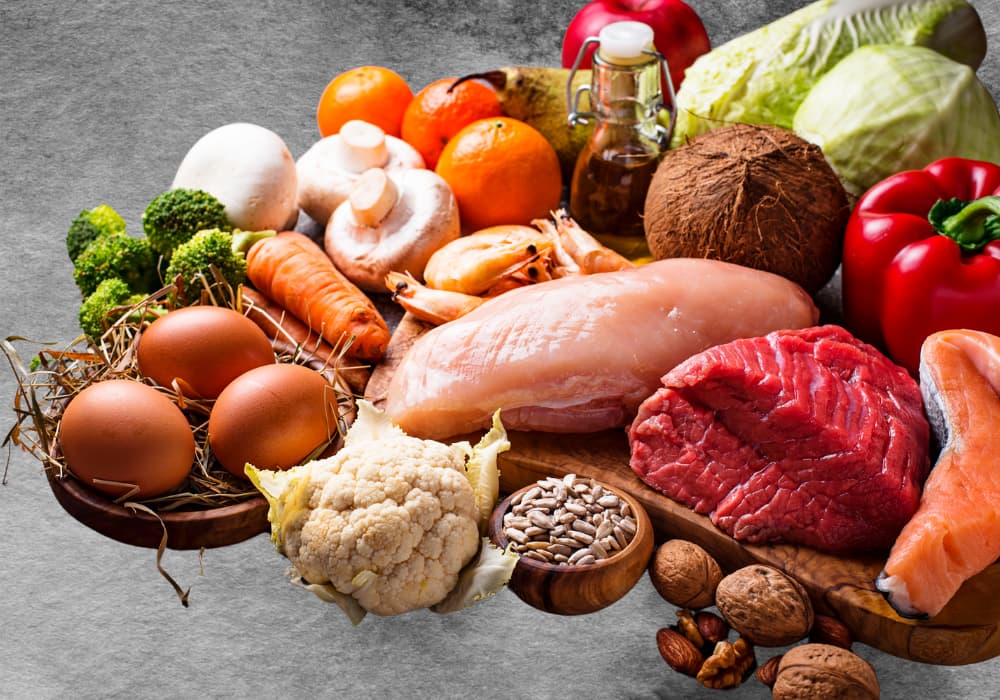These days, we are inundated with a constant stream of ‘fad’ diets promising miraculous weight loss results and remarkable health benefits. These diets often line the pockets of celebrity endorsers, media companies, and corporate giants. Among these, the ever-popular Atkins diet and even the cabbage soup diet continue to make rounds. However, one diet that predates all of us and remains relevant today is the Paleolithic diet. It may hold the key to the body and lifestyle we all crave.
The Paleo Diet
The Paleo diet, known as the Paleolithic, Stone Age, hunter-gatherer, or caveman, draws inspiration from our ancient ancestors. It emphasises consuming foods available during the Paleolithic Era, dating from around 2.5 million to 10,000 years ago. This diet includes lean meats, most vegetables, eggs, fish, nuts, good fats, berries, and clean water, excluding processed foods, sugar, salt, dairy, grains, and fast food. These excluded items only became common with the advent of agriculture during the Neolithic period, significantly altering our diet and introducing health issues such as cardiovascular disease, obesity, and osteoporosis.
Why the Paleo Diet Works
Unlike many modern fad diets, the benefits of the Paleo diet are backed by credible research and sound biological reasoning. Our genes have not adapted to handle many modern food types, especially grains, which have been linked to ‘leaky gut syndrome.’ This condition involves the abnormal permeability of the gut wall, allowing substances like toxins and undigested food to leak through, causing inflammation and contributing to diseases such as asthma, autism, and diabetes.
Robb Wolf, author of “The Paleo Solution,” advocates this natural way of eating, suggesting it can help you lose weight, look younger, have more energy, sleep better, and feel overall well-being. Having followed this diet for months, I wholeheartedly agree with Wolf’s theory. By following this more alkaline-based diet, I have never felt better. It’s not just a diet but a lifestyle change I intend to maintain for many years to come. Even if you don’t need to lose weight, this way of eating can improve your health in ways you never deemed possible.
Modern Adaptation of the Paleo Diet
A modern Paleo diet includes fruits, vegetables, lean meats, fish, eggs, nuts, and seeds. These are foods that people could obtain through hunting and gathering. It excludes foods that became common with small-scale farming about 10,000 years ago, such as grains, legumes, and dairy products.
The Paleo diet aims to eat foods likely consumed by early humans. The diet is based on the idea that our genes are not well adapted to the modern diet, which emerged from farming. Farming made grains, legumes, and dairy more available and changed the diets of the animals people ate. This mismatch between our diet and genetic adaptation is believed to contribute to obesity, diabetes, and heart disease today.
You might choose to follow a Paleo diet to:
- Lose weight or maintain a healthy weight
- Reduce cardiovascular risk factors
What to Eat and Avoid on the Paleo Diet
What to Eat:
- Fruits and vegetables
- Nuts and seeds
- Eggs
- Lean meats, especially grass-fed animals or wild game
- Fish rich in omega-3 fatty acids, such as salmon, mackerel, and albacore tuna
- Oils from fruits and nuts, like olive oil or walnut oil
What to Avoid:
- Grains (wheat, oats, barley)
- Legumes (beans, lentils, peanuts)
- Dairy products (milk, cheese)
- Refined and added sugar
- Added salt
- Starchy vegetables (corn, peas, white potatoes)
- Highly processed foods (chips, cookies)
Typical Paleo Diet Menu
Here’s a look at what you might eat during a typical day following a Paleo diet:
Breakfast:
Broiled salmon and cantaloupe.
Lunch:
Salad with romaine, carrot, cucumber, tomatoes, avocado, walnuts, and lemon juice dressing.
Dinner:
Lean beef sirloin tip roast, steamed broccoli, salad with mixed greens, tomatoes, avocado, onions, almonds, lemon juice dressing, and strawberries for dessert.
Snacks:
An orange, carrot sticks, or celery sticks.
The Paleo diet generally aligns with many recommended healthy eating patterns, emphasising fruits, vegetables, lean meats, and avoiding processed foods. However, long-term studies are limited. Short-term studies suggest the Paleo diet can aid in weight loss and improve blood pressure, cholesterol, and triglycerides.
A study in Spain found that following a Paleo diet was linked to lower cardiovascular risk factors, mainly due to avoiding highly processed foods and eating more fruits and vegetables. However, more extensive and long-term research is needed to fully understand the Paleo diet’s health benefits and potential risks.
The Bottom Line
A Paleo diet may help you lose weight and improve specific health markers. However, it’s essential to consider potential nutritional deficiencies and cost implications. Balancing exercise and a healthy diet of fruits and vegetables can also provide significant health benefits.
We help our members with a nutritional programme that works for them. If you’re struggling, give us a shout at one of our personal training gyms in East London, and we’ll help you work out a plan that suits you.
You may also find our nutritional e-books helpful to eating healthier.
Related Articles
- What to Eat to Live Longer (and feel better)
- What Makes a Diet Successful? A Different Approach to Food
- Benefits Of Good Nutrition Habits Versus a Diet
- Include These Principles in Your Fat Loss Programme
- A Simple Nutrition Step to Avoid Menopause Weight Gain

